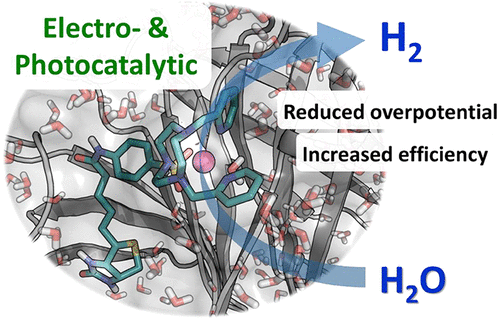Incorporation of biotinylated aminopyridine cobalt complexes derived from the triazacyclononane (tacn) scaffold into the streptavidin protein leads to the formation of artificial metalloenzymes for water reduction to hydrogen. The synthesized artificial metalloenzymes have lower overpotential (at the half-peak up to 100 mV) and higher photocatalytic hydrogen evolution activity (up to 14- and 10-fold increase in TOF and TON, respectively at pH 12.5) than the free biotinylated cobalt complexes. 1H-NMR, EPR and XAS highlight the presence of the metal complexes upon supramolecular attachment to the streptavidin. pH-dependent catalytic studies and molecular dynamics (MD) simulations suggest that the increase in the catalytic activity could be induced by the protein residues positioned close to the metal centers. These findings illustrate the ability of the biotin-streptavidin technology to produce artificial metalloproteins for photo- and electrocatalytic hydrogen evolution reaction
